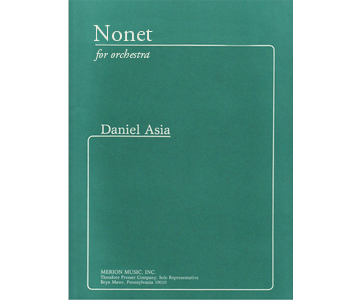-
Nonet - Mvt. 1. Impetuous, contemplative
1 -
Nonet - Mvt. 2. Moderato
2 -
Nonet - Mvt. 3. Allegro, molto ritimico
3 -
Nonet - Mvt. 4. Calmo, adagio
4 -
Nonet - Mvt. 5. Allegro
5 -
Nonet - Mvt. 6. Lively
6
The Nonet is in six movements. Movement I, III, and V are all less than a minute, and are three takes on the same materials, which are boisterous and then melancholic. The presentations are quite different in character, as appropriate for their positioning in the work, with the materials being reordered as well as varied. So the first is introductory in quality, with much doubling, and fanfare-like rhythms. This is contrasted with a moment of sweet repose. Movement III is much fuller harmonically, and is characterized by sharp syncopations, with a strong jazz-like sensibility. Movement V, the third and final take on this material, is reminiscent of the first movement, in its lean texture. At the same time, it is more rhythmically complex, with the two lines occasionally going their own way.
Movements II, IV, and VI are the real meat of the work. Movement II is marked moderato, and is a set of variations. The mood is restrained, but optimistic. Each variation is just a little more complex than the previous. It is punctuated by occasional cadenzas, the material of which sometimes invades or seeps into the variations themselves. The overall flow and structure of the movement is arch-like, with a building of energy from the beginning to the middle, and then a gradual receding to the end. Movement IV is an adagio, that is mostly meditative in quality. It is gently lyrical. Whereas other movements are sparkling with quick and rapid changes of texture and color, this movement highlights different small groups that appear for extended periods of time. Movement VI is an all-out presto, full of devilish twists and turns. It combines rapid registral shifts, dizzying changes of texture, and of course, wicked and abrupt dynamic changes. It provides a rollicking conclusion to the entire work.
The piece has a duration of approximately 14 minutes, and was commissioned by the Barlow Endowment for Music, and the Arizona Friends of Chamber Music, with the support of Wesley Green, in memory of his wife Pearl.
